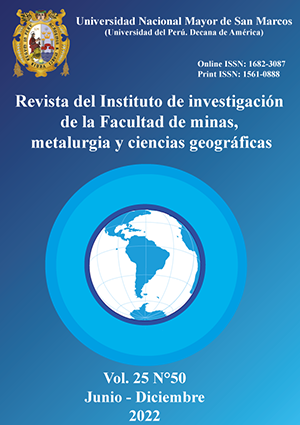The Mosoghi sustainability model for the water management of companies
DOI:
https://doi.org/10.15381/iigeo.v25i50.24233Keywords:
sustainable water management, ethical principles, efficiency and sustainability indicators, degree of sustainability, continuous improvementAbstract
The Companies do not have a way to measure the sustainability of the water management that they apply in their activities. Therefore, they do not have a horizon for the continuous improvement of said management. The MOSOGHI Model proposes an alternative solution to this problem. This Model organized with ethical principles proposed by UNESCO in Istanbul in 2009 and sustainability indicators for Water Management, facilitates such measurement. Through a documentary analysis, the application of the principles of ethics and the RUFOI system, sustainability indicators for Water Management are obtained. By using mathematical and statistical formulas, the degree of sustainability is obtained based on indicators and indices. By weighing the sustainability indicators and indices, we determine the Sustainability Degree with which Water Management is evaluated. As they are mathematical and statistical data, we could carry out simulations to visualize the results of the Degree of sustainability of the Water Management of a Company, but as we have real data of the application of the MOSOGHI Model in the Water Management of the Milpo Company, on this occasion we show the results of the measurement of the sustainability of said Management.
Downloads
Published
Issue
Section
License
Copyright (c) 2022 Gaudencio Laureano Valentín, Daniel Florencio Lovera Dávila

This work is licensed under a Creative Commons Attribution 4.0 International License.
AUTHORS RETAIN THEIR RIGHTS:
a. Authors retain their trade mark rights and patent, and also on any process or procedure described in the article.
b. Authors retain their right to share, copy, distribute, perform and publicly communicate their article (eg, to place their article in an institutional repository or publish it in a book), with an acknowledgment of its initial publication in the Rev. Inst. investig. Fac. minas metal cienc. geogr.
c. Authors retain theirs right to make a subsequent publication of their work, to use the article or any part thereof (eg a compilation of his papers, lecture notes, thesis, or a book), always indicating the source of publication (the originator of the work, journal, volume, number and date).






